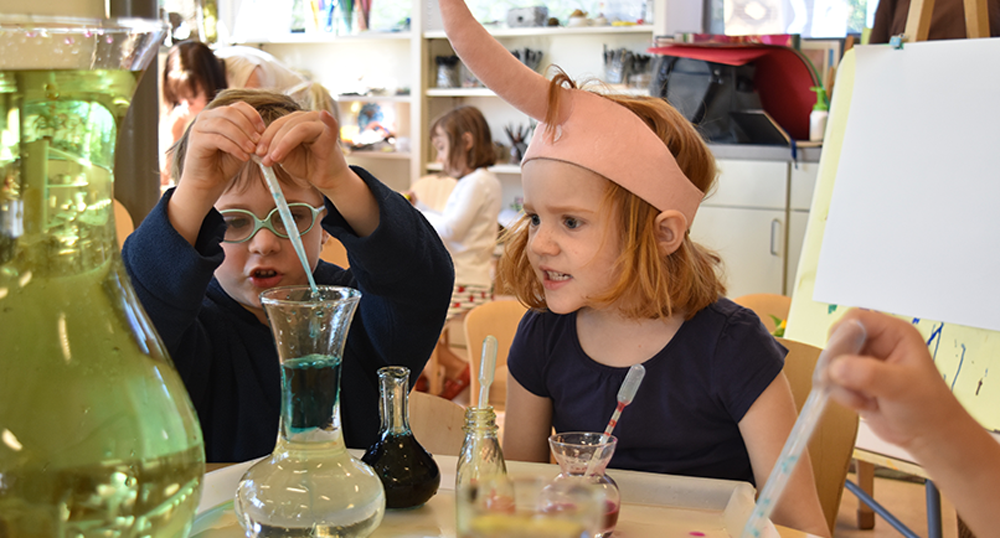Inspiring Inventiveness: Guiding Principles

An inventive mindset is almost directly opposed to what is currently emphasized in too many schools… I want this to thrive because it is based on supporting the brilliance of children of color rather than mitigating distress.
Schools invite, sustain, and expand inventiveness when they…
Children are strong and capable protagonists of their own learning. Prioritizing inventiveness demands a belief in our ability to invent productive responses to a rapidly changing world.
In a complex world, schools need to foster inventive dispositions and skills that advance a capacity for civic responsibility and lead children to thrive as citizen world-makers pursuing a more just and sustainable future.
Inspiring inventiveness is not a separate part of the day. It is a pedagogy that transforms the way that children and adults work with content, materials, time, and each other; it occurs within and across disciplines and is visible in small moments and across long periods of time. Fostering such an environment allows children and adults to constantly build theories, take risks, and experience setbacks as opportunities for learning.
In these schools, teachers pose big, open-ended questions that value equally the known and unknown world. They ask questions that have meaning for their specific group of children to contemplate at this point in time. Teachers make visible children’s theories in ways that support, nudge, and challenge thinking.
As neuroscientist Mary Helen Immordino-Yang notes, “It is literally neurobiologically impossible to think deeply about things that you don’t care about.” Attention to emotions promotes children’s and adults’ engagement in – and extends the depths of – intellectual explorations. The aesthetic dimension is an essential partner in this effort.
In formal and informal, small-group, and whole- group contexts, children and adults put forth and unpack ideas, create meaning, and invent new ideas and ways to share them. These schools value collaboration and vigorous democratic exchange.
The sociologist Thomas Henricks writes, “Play is not a flight from the world; it is inquiry into the challenges and responsibilities of social living.” Children at play experience low-stakes opportunities to explore ideas, make mistakes, and practice inventiveness. Play provides the opportunity to meet up with problems and practice taking risks to solve them.
These learning environments use stories and materials as invitations for children to make connections, experience empathy, take advantage of serendipity, and envision an alternative, more just world. In this way, schools push against standardized education that reinforces the status quo.
Children have access to a range of media through which they can develop and express their thinking. These materials make children’s learning visible to themselves and others, supporting their ability to reflect on and communicate what they have learned.
These strategies may come from disciplines such as psychology, the arts, philosophy, the sciences, as well as children’s own inventions. Seeing one’s ideas used by others advances one’s agency.
Children regularly think (and enjoy thinking) about where their ideas come from and how they develop, how they find and solve problems, and how to work through conflict. Teachers systematically and collaboratively reflect on their own practices, inventing and reinventing their pedagogy. They use artifacts of children’s thinking such as transcripts of conversations and children’s work to ground pedagogical conversations about teaching and learning and to inform their next steps.
These Principles are enacted in Practices
